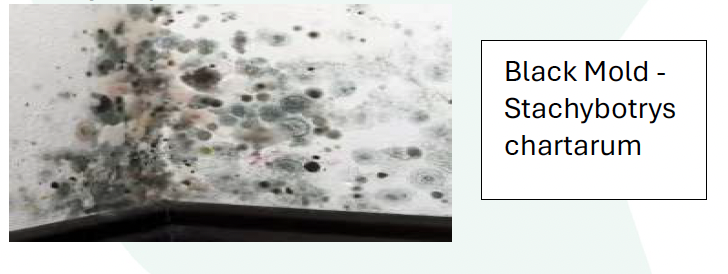What is Mold and How Dangerous Is It?

What is Mold and How Dangerous Is It?


Meet Ed
Instructor Ed Jones has over 30 years of experience in theindustry, has the title of MasterWater Restorer, is an Institute ofInspection Cleaning andRestoration Certification (IICRC)-approved instructor, and hasserved on the S500-2021consensus body committee todevelop the most recent standard.
There are over 100,000 species of mold on this planet, so mold is virtually everywhere. It has been estimated that mold makes up approximately about 25% of the earth’s biomass! Mold is one type of fungus, and some molds can even be beneficial such as in the development of penicillin or when used to produce cheese, soy sauce, cured meats and other foods. Mold spores are tiny reproductive “seeds” that float in the air and land on surfaces.
Mold spores are everywhere, indoors, and outdoors and typically aren’t a problem unless they are on wet materials that represent an organic food source, like drywall paper, wood, latex glues, etc. Mold spores are typically 2-10 microns in size. To put this in perspective 1 micron is about one twenty-five thousandth of an inch and the diameter of the tip of a human hair is about 60-70 microns, so a mold spore is microscopic, and you can’t see them without the help of a microscope.
Mold requires moisture, an organic food source, temperature (56-86 degrees F), stagnant air and time to grow. You only need to remove one of those ingredients to stop mold from growing. Like a seed that you plant, it will only grow if it is warm enough and has moisture, nutrients, and time. Mold can NOT grow without sufficient moisture.

Unfortunately, mold has had a lot of bad publicity in the past due to the media sensationalizing the dangers of mold exposure. Because there are many environmental and mold remediation companies looking for new customers the internet is filled with how dangerous mold can be and why you need to call them to help fix your mold problems. We are all exposed to mold the moment we are born and live with it our entire lives. Some individuals can have more pronounced health eects, like itchy, watery eyes, sneezing or coughing from prolonged exposure to high levels of mold spores, depending on the species of mold and what they may be more allergic to. In rare cases, there can be hypersensitive individuals that may develop more serious respiratory health issues when they have long-term exposure to high levels of certain types of molds. These are the cases that have been sensationalized and can make people fearful of any exposure to mold.

Most people are fearful of what they don’t understand and what they have read or heard can be dangerous to their health, like our recent experience with COVID-19. We simply need to educate everyone and take normal precautions to prevent mold from growing indoors by cleaning regularly and keeping materials dry so mold can’t grow. Most molds must have a pretty, high level of water activity (aw) to be able to grow and proliferate. Water activity (aw) is simply the equilibrium relative humidity (ERH) of the air right next to a surface. Most mold spores typically need a water activity (aw) level of .8 to start growing. This is 80% ERH and represents a very wet condition. There are a few molds that can start to grow slowly around .75 aw, which is why most experts recommend keeping indoor relative humidity levels below 70%.
At Accuserve’s educational “flood houses” built on college campuses in Wisconsin and Ohio we have tested how quickly we can get mold to grow in normal household temperatures when there is a flooding or water intrusion event. We basically build a mold incubator and get the most common building materials wet and measure the relative humidity and temperature in the incubator each day and examine the materials to see which ones grow mold the quickest. After conducting that experiment dozens of times with our students we have found that even though mold might start growing on a wet organic food source, like drywall paper or wood, within 24-48 hours, it takes approximately 5-6 days for the mold to grow enough to become visible by the naked eye. Just like if you planted a seed in your garden or flower bed, the vegetable or flower doesn’t spring up immediately, it must have the right temperatures, moisture, nutrients, and moisture to grow. The cell walls of mold spores will start to soften when wet for 24 hours and then the spore sends out an exploratory root, called a hypha, to search for food. If it finds an organic food source, like paper or wood, it will start to feed and send back a signal for more roots to follow, thus a mass of roots called mycelium. At this point the mold is growing but will take days to reproduce enough to become visible to the naked eye. Having said that, once mold starts to take hold and growth conditions are optimum it can grow exponentially.



